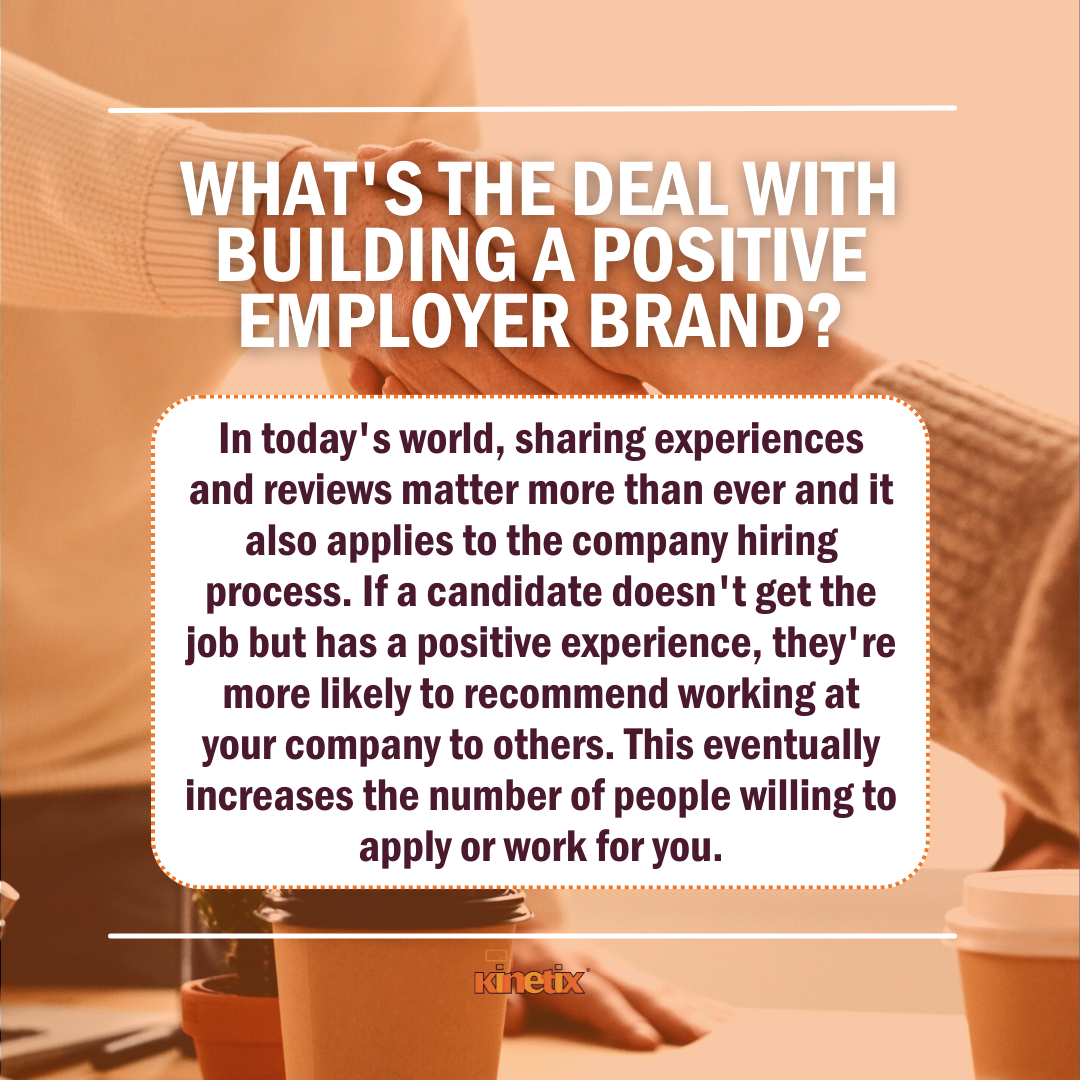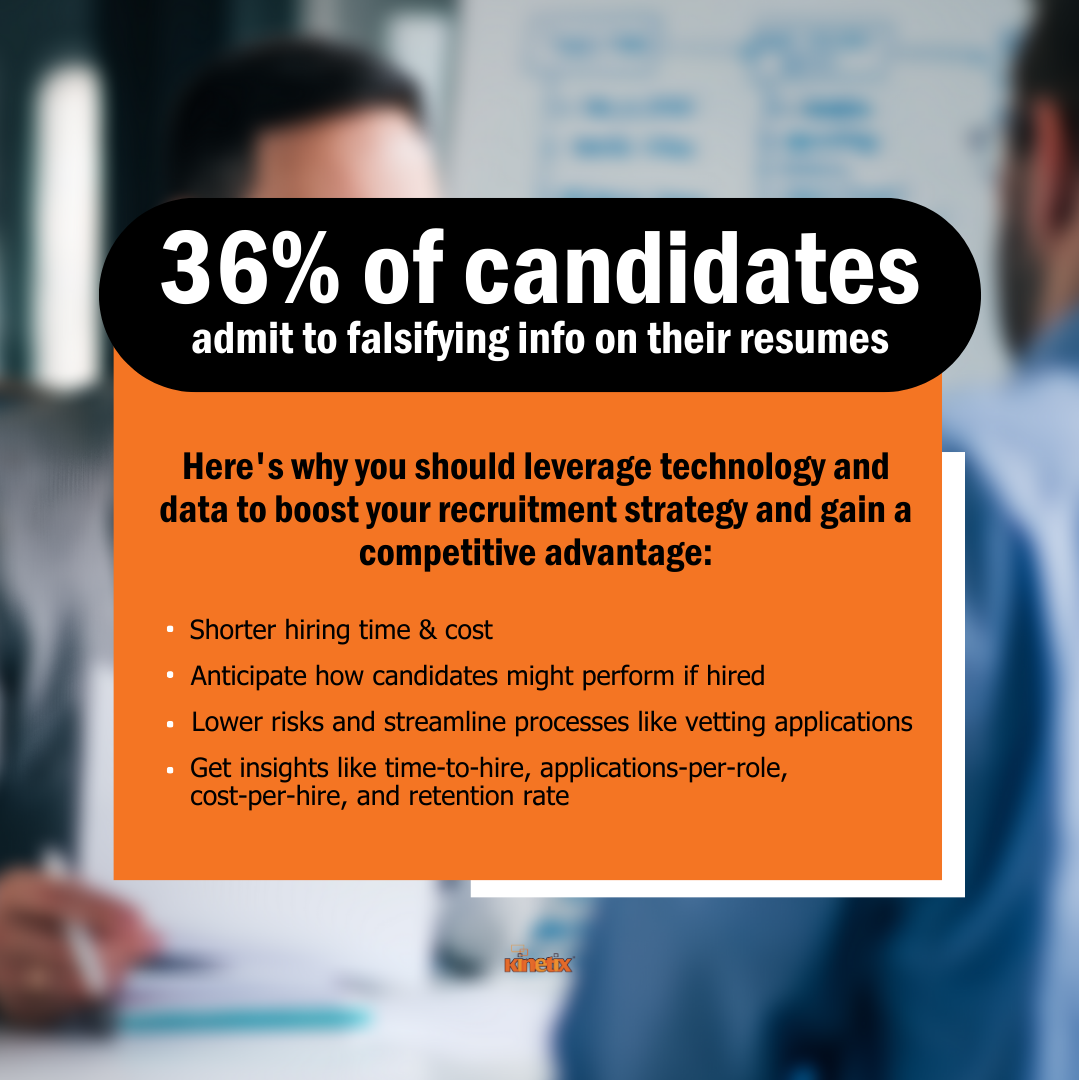
A strong team can propel your company forward, while mismatches can drag you down.
But how do you know when or where to re-evaluate your hiring strategies?
In the article, our talent management experts explore the telltale signs that indicate a need for talent acquisition consulting.
What is a Talent Acquisition Consultant?
A talent acquisition consultant is a professional expert in the recruitment realm, specializing in identifying, attracting, and securing top-tier talent for organizations.
They offer insights into current hiring trends, optimize recruitment processes, and provide strategies tailored to a company's unique needs.
These consultants leverage industry expertise and best practices to ensure that organizations' talent acquisition efforts are efficient, effective, and aligned with their business objectives.
Essentially, they act as strategic partners, guiding companies in making informed hiring decisions and enhancing their overall recruitment approach.
7 Signs Your Talent Acquisition Strategy is Broken & How Consultants Can Help
A robust talent acquisition strategy is more than a necessity—it's the backbone of organizational growth and sustainability.
However, even the most tried-and-true strategies can show cracks over time, leading to inefficiencies, missed opportunities, and potential setbacks.
Recognizing these signs early is crucial, and enlisting the expertise of consultants can be the game-changer you need.
Let's dive into the seven tell-tale signs that your talent acquisition strategy might be faltering and explore how consultants can steer you back on the path to success.
1. High Turnover Rates

Turnover rate refers to the percentage of employees a company loses over a certain period, whether voluntarily or involuntarily.
A high turnover rate is often a red flag, signaling underlying issues in the organization.
Why High Turnover is a Concern
- Cost Implications: It's not just about recruitment costs. When an employee leaves, you're looking at expenses related to training, onboarding, and even potential business disruptions. Replacing employees can cost anywhere from 50% to 200% of their annual salary, depending on the role and industry.
- Lost Productivity: Every time an employee resigns, there's a period where that role remains vacant. This gap means reduced productivity and can overburden other team members who need to fill in.
- Team Morale: Consistently losing team members can dishearten those who remain. It might breed insecurity ("Why are so many leaving? Should I consider leaving too?") and disrupt team dynamics.
- Lost Knowledge: Employees, especially long-term ones, carry institutional knowledge. When they leave, they take specific skills, experiences, and understandings of company processes. This intellectual drain can be hard to quantify but is a real loss.
Possible Causes of High Turnover
- Inadequate Compensation: If employees feel they can get a better deal elsewhere, they often will.
- Mismatched Job Roles: Sometimes, employees discover that their role isn't what they expected or wanted.
- Poor Management: Leadership plays a significant role in employee satisfaction. A lack of support or recognition from managers can lead to resignations.
- Limited Growth Opportunities: Employees, especially top talents, seek roles where they can grow, learn, and advance. They'll look elsewhere if they don't see a future in their current company.
- Workplace Culture Issues: A toxic work environment, lack of work-life balance, or misalignment with company values can all prompt employees to leave.
How a Talent Acquisition Consultant Can Help Lower Turnover Rates
- Root Cause Analysis: Consultants can analyze the reasons behind high turnover, ranging from cultural misalignment to compensation issues.
- Cultural Fit Evaluation: Ensuring candidates align with company culture can increase retention. Consultants can refine recruitment processes to prioritize this fit.
- Employee Feedback Integration: By incorporating feedback from exit interviews, consultants can recommend actionable changes to improve retention.
- Competitive Analysis: Consultants can assess how your compensation and benefits stack up against competitors, offering insights to make them more compelling.
Lengthy Hiring Processes

The hiring process encompasses everything from posting a job vacancy to onboarding a new recruit.
A lengthy hiring process means a significant time lag between these steps, causing delays in filling vacant positions.
Why a Prolonged Hiring Process is Problematic
- Missed Opportunities: Top talents are in demand and typically won't wait long. If your hiring process is slow, you risk losing these individuals to competitors who move faster.
- Operational Delays: Each day a position remains vacant, especially crucial roles, daily operations are hampered, affecting productivity, client servicing, and even profitability.
- Increased Workload: Existing employees might have to shoulder the responsibilities of the vacant position, leading to overwork and potential burnout.
- Reputation Impact: Word gets around. If your company gains a reputation for slow hiring, top talents might be hesitant to apply in the first place.
- Cost Implications: Extended hiring periods can lead to increased costs in the form of repeated job postings, prolonged use of hiring resources, and potential overtime payments to existing staff covering vacant roles.
Potential Reasons for Extended Hiring Processes
- Undefined Job Roles: If the job description isn't clear from the start, it can lead to delays later on as candidates might not be a right fit, necessitating a restart of the hiring process.
- Multiple Approval Layers: Too many decision-makers or approval steps can significantly slow things down.
- Inefficient Tools: Relying on outdated recruitment software or not utilizing modern recruitment technologies can lengthen the process.
- Inconsistent Interviewing: Evaluations can become drawn out and inconsistent without a standardized interview process.
- Over-caution: While it's crucial to be thorough, being excessively cautious—like waiting for the 'perfect' candidate—can extend the hiring timeline unnecessarily.
How Talent Consultants Can Shorten Hiring Processes
- Process Streamlining: Consultants can identify bottlenecks and inefficiencies in your current hiring workflow and recommend optimizations.
- Technology Integration: By introducing and integrating modern recruitment software, consultants can automate and accelerate various hiring stages.
- Stakeholder Alignment: Consultants can facilitate alignment among hiring managers, HR, and recruiters to expedite decision-making.
Mismatched Skill Sets

A mismatched skill set arises when an employee's abilities, experiences, and competencies don't align with the requirements or expectations of their role.
Such mismatches can be glaringly obvious or subtly nuanced but equally impactful.
Consequences of Mismatched Skill Sets
- Reduced Productivity: Employees with unsuitable skills might take longer to complete tasks, struggle with responsibilities, or require constant guidance.
- Increased Training Costs: Organizations may need to invest more in training and development to bridge the skill gap, leading to added expenses.
- Lower Employee Morale: Continually feeling out of one's depth can reduce confidence and job satisfaction, potentially affecting an employee's overall well-being.
- Project Delays: Particularly in roles crucial to project delivery, a skills mismatch can cause significant hold-ups and disruptions.
- Inefficient Resource Use: Assigning tasks to those without the right skills can lead to wasted resources, be it time, money, or other operational resources.
Reasons for Hiring Individuals with Mismatched Skill Sets
- Vague Job Descriptions: Unclear or generic job descriptions can attract a wide array of candidates, making it difficult to pinpoint the right fit.
- Hasty Hiring Decisions: Rushed hiring, especially in urgent vacancies, can lead to overlooking skill set requirements.
- Inadequate Interview Processes: A lack of standardized assessments or not probing deeply into a candidate's skills during interviews can result in oversight.
- Overvaluing Potential: While potential is essential, relying too heavily on it without considering current skills can result in mismatches.
- Market Shortages: Companies might feel forced to settle for less-than-perfect fits in industries or roles with a talent shortage.
How Talent Consultants Improve Skill Set Match
- Clearer Job Descriptions: Consultants can help craft precise job descriptions that accurately represent role expectations and requirements.
- Skills Assessment Development: By implementing standardized skills assessments, consultants ensure candidates meet essential criteria.
- Training Recommendations: For existing employees, consultants can recommend training programs to bridge skill gaps.
Lack of a Defined Employer Brand

Employer branding pertains to a company's reputation as an employer and its value proposition to its employees.
It's the perception potential, current, and past employees have about the company's work environment and culture.
A well-defined employer brand can significantly influence recruitment and retention, while a lack of it can create challenges.
Consequences of a Weak or Undefined Employer Brand
- Difficulty Attracting Talent: Top-tier candidates often look for employers with strong, positive reputations. If your company doesn't have a clear employer brand, you might miss out on this talent pool.
- Higher Recruitment Costs: With a weak brand, companies might need to invest more in advertising and incentives to attract candidates.
- Lower Employee Engagement: Employees want to feel proud of where they work. Without a strong employer brand, morale and engagement can dip, affecting productivity.
- Increased Turnover: Employees might not stay long with a company they don't feel connected to or proud of, leading to higher attrition rates.
- Lack of Direction: An unclear employer brand can lead to confusion about company values and culture, making it harder to foster a unified, motivated workforce.
Reasons for an Undefined Employer Brand
- Neglecting Brand Building: Some companies focus heavily on product or service branding but neglect their employer branding.
- Inconsistent Messaging: Mixed signals about company culture, values, and mission can confuse potential employees and dilute the employer brand.
- Not Seeking Feedback: Not listening to current or past employees' experiences can lead to a skewed or weak employer brand.
- Lack of Visibility: If a company isn't active on platforms where potential employees spend time, such as career sites or social media, their employer brand might not get adequate exposure.
- Not Adapting: Stagnant brands that don't evolve with changing workforce expectations can become outdated and less appealing.
How Talent Acquisition Consultants Enhance Employer Branding
- Brand Evaluation: Consultants can assess your current employer brand, highlighting strengths and areas for improvement.
- Branding Strategy Development: Create a compelling employer value proposition and branding strategy that resonates with your target talent pool.
- Feedback Mechanisms: Consultants can implement methods to gather continuous feedback on your employer brand, ensuring it remains relevant and appealing.
Inefficient or Outdated Recruitment Tools

Recruitment tools encompass software, platforms, and methodologies used to attract, evaluate, and hire candidates. These tools streamline and automate the hiring process, ensuring a consistent and efficient approach.
However, when these tools are outdated or inefficient, they can become more of a hindrance than a help.
Drawbacks of Using Outdated or Inefficient Recruitment Tools
- Lengthier Hiring Process: Tools that don't perform optimally can slow down the recruitment pipeline, leading to prolonged vacancies.
- Poor Candidate Experience: Slow application processes, lack of mobile compatibility, or cumbersome interfaces can deter potential hires from completing their applications.
- Reduced Competitive Edge: While your business struggles with outdated tools, competitors might leverage the latest technologies to gain an edge in attracting top talent.
- Higher Costs: Inefficient tools might require more manual intervention, leading to higher operational costs. Additionally, maintaining old systems can sometimes be more expensive than adopting newer solutions.
- Data Inconsistencies: Outdated tools might not integrate seamlessly with other modern systems, leading to data silos and inconsistencies, which can hamper decision-making.
Reasons Companies Stick with Outdated Tools
- Resistance to Change: Adopting new tools can require training and adjusting to new processes, which some companies might be hesitant to undertake.
- Budgetary Constraints: The upfront cost of new software or tools can deter companies, even if the long-term ROI would be beneficial.
- Lack of Awareness: Some companies might not be aware of the advancements in recruitment technologies or the tangible benefits they can offer.
- Legacy Systems: Companies deeply invested in a particular ecosystem might find it challenging to migrate to newer platforms due to compatibility or data transfer concerns.
- Fear of Transition Challenges: Migrating data, setting up new systems, and the potential for teething issues can deter companies from upgrading their tools.
Benefits of Talent Acquisition Technology
- Efficiency Boost: Modern talent acquisition technologies streamline routine tasks, significantly reducing time-to-hire and administrative workloads.
- Improved Candidate Experience: A smooth application process, facilitated by advanced recruitment platforms, enhances candidates' perception of the company and ensures a positive experience from the outset.
- Data-Driven Decision Making: Advanced analytics and reporting functionalities provide insights into recruitment metrics, enabling companies to make informed decisions based on tangible data.
- Wider Reach: Modern talent acquisition tools can tap into a broader talent pool, reaching potential candidates across various platforms and geographies.
- Automated Screening: AI-driven technologies can sift through large volumes of applications, highlighting the most suitable candidates based on predefined criteria ensuring that recruiters' time is spent on the most promising prospects.
- Enhanced Employer Branding: Integrated platforms allow for consistent messaging and branding across all recruitment channels, reinforcing the company's image as a desirable employer.
- Mobile Recruitment: As mobile device usage grows, mobile-optimized application processes attract the tech-savvy, modern candidate.
- Integrated Onboarding: Many talent acquisition technologies offer integrated onboarding tools, ensuring a seamless transition from candidate to employee reducing initial turnover.
- Cost Savings: Over time, the efficiencies gained from leveraging talent acquisition technology can lead to significant cost savings, both in terms of time and resources.
Difficulty in Attracting Diverse Talent

Diversity in recruitment pertains to hiring a workforce that represents a variety of backgrounds, experiences, skills, identities, and perspectives.
A diverse workforce can drive innovation, enhance company culture, and better position a business to serve a broad client base.
Downside of Not Attracting Diverse Talent
- Limited Perspectives: A homogenous workforce can lead to similar thinking patterns, hindering creativity and innovation.
- Missed Market Opportunities: Diverse teams can better understand and cater to a broader range of clients and demographics, leading to expanded market reach.
- Reputation Risks: A lack of diversity can impact a company's public image, especially in today's socially-conscious environment, potentially deterring clients and top-tier talent.
- Reduced Employee Engagement: Employees value inclusivity. Companies that don't prioritize diversity can face employee satisfaction and retention challenges.
- Legal and Compliance Risks: Some regions have regulations around equal opportunity employment, making diversity not just a cultural goal but a legal requirement.
Reasons Companies Struggle with Diversity in Hiring
- Unconscious Bias: Hiring managers might inadvertently favor candidates who mirror their own backgrounds or experiences.
- Narrow Recruitment Channels: Recruiting from the same schools, platforms, or networks can limit the diversity of incoming applications.
- Lack of Inclusive Branding: Companies might not showcase diversity in their employer branding or might fail to communicate inclusivity as a core value.
- Inadequate Training: Without proper training, hiring teams might not know how to attract, evaluate, and onboard diverse candidates effectively.
- No Clear Diversity Goals: Diversity initiatives can lose momentum or direction without measurable goals or accountability.
How Consultants Help Attract Diverse Talent
- Diversity Audit: Consultants can assess your current workforce and hiring practices, pinpointing diversity gaps and challenges.
- Inclusive Strategy Development: Create recruitment strategies that appeal to a diverse talent pool, from job ads to interview practices.
- Bias Training: Offer training sessions to reduce unconscious biases in the recruitment process.
Unstructured Interview Process

The interview process is a pivotal interaction between a potential candidate and the organization.
An unstructured interview process that lacks consistency, predefined criteria, or a set format can result in subjective evaluations and inconsistent outcomes.
Pitfalls of an Unstructured Interview Process
- Inconsistent Evaluations: Different interviewers might prioritize different aspects, leading to varied feedback for the same candidate, making final decisions challenging.
- Potential Bias: Without a structured format, interviews can easily sway towards personal biases, leading to decisions based on gut feelings rather than objective criteria.
- Missed Key Information: Without a standard set of questions or topics to cover, interviewers might miss critical details about a candidate's skills, experience, or fit.
- Candidate Dissatisfaction: Inconsistencies in the interview process can create confusion or frustration for candidates, potentially affecting their perception of the company.
- Legal Concerns: Asking inappropriate or illegal questions, even unintentionally, can open the company up to legal ramifications.
Reasons for Persisting with an Unstructured Interview Process
- Lack of Training: Interviewers might not have received formal training on conducting structured interviews or understanding their importance.
- Resistance to Change: Some companies, especially those with a long-standing informal culture, might resist introducing formal structures.
- Perceived Flexibility: There's a misconception that structured interviews are rigid, while unstructured ones allow for more adaptability and genuine interactions.
- Overconfidence: Some hiring managers might believe their intuition is sufficient for making the right hiring decisions.
- Lack of Awareness: Not recognizing the tangible benefits of structured interviews can lead to complacency with the existing process.
How Consultants Formalize Interview Processes
- Standardized Framework: Develop a consistent interview framework tailored to your company's values and role requirements.
- Interviewer Training: Equip interviewers with the skills and knowledge to conduct effective, structured interviews.
- Feedback Systems: Implement systems to gather and analyze feedback after interviews, ensuring continuous improvement.
10 Talent Acquisition Trends We Expect to Carry into 2024

With advancements in technology, changing employee preferences, and the ongoing effects of the COVID-19 pandemic, the recruitment arena is in a constant state of flux.
Here are some of the talent acquisition trends we anticipate will remain prominent as we move into 2024.
- Remote and Hybrid Work Models: The demand for remote and hybrid work models isn't going away. Companies are now offering flexible work arrangements not just as a perk but as a standard to attract and retain top talent.
- Diversity, Equity, and Inclusion (DEI) Initiatives: There's a growing emphasis on creating diverse and inclusive workplaces. Companies are investing more in DEI initiatives and actively seeking tools and strategies to eliminate biases from their hiring processes.
- Technology-Driven Recruitment: Artificial Intelligence (AI) and Machine Learning (ML) use in the recruitment process is expanding. From automated resume screening to chatbots guiding candidates through application processes, technology is playing a more significant role in talent acquisition.
- Upskilling and Reskilling: With rapid technological advancements and changing job roles, there's a focus on training current employees to meet new demands rather than always seeking external talent.
- Employer Branding: Companies realize that they must offer more than competitive salaries to attract top talent. A strong employer brand encompassing company culture, values, and growth opportunities is becoming paramount.
- Soft Skills Assessment: While hard skills remain crucial, there's an increased emphasis on soft skills like adaptability, critical thinking, and emotional intelligence. Recruiters are finding innovative ways to assess these skills in their candidates.
- Virtual Reality (VR) and Augmented Reality (AR) in Recruitment: Companies are experimenting with VR and AR to offer virtual office tours, conduct immersive assessments, or provide realistic job previews to potential candidates.
- Employee Well-being and Mental Health: Given the challenges of recent years, there's a heightened focus on ensuring employee well-being. Companies are offering wellness programs, mental health resources, and more to both attract and retain employees.
- Data-Driven Recruitment: Data analytics is playing a crucial role in improving the efficiency and effectiveness of the hiring process. Predictive analytics, in particular, is helping recruiters identify potential talent pools, forecast hiring needs, and more.
- Internal Mobility: Companies focus on providing growth opportunities within, allowing current employees to shift roles or departments. This helps retain talent and saves on the time and costs associated with external hiring.
Work With a Trusted Talent Acquisition Consulting Firm
With 2024 right around the corner, now is the perfect time to re-examine, reimagine, and rejuvenate your hiring practices.
Whether leveraging the latest technologies, redefining your employer brand, or creating a more inclusive hiring process, our talent acquisition consulting services are customized to your unique business needs.
Let Kinetix be your guide in this journey, ensuring that your talent acquisition strategies not only reflect today's demands but are also primed for tomorrow's challenges.
Ready to elevate your recruitment game? Connect with our team at Kinetix to learn more about working with a talent acquisition consultant to attract more qualified candidates.

